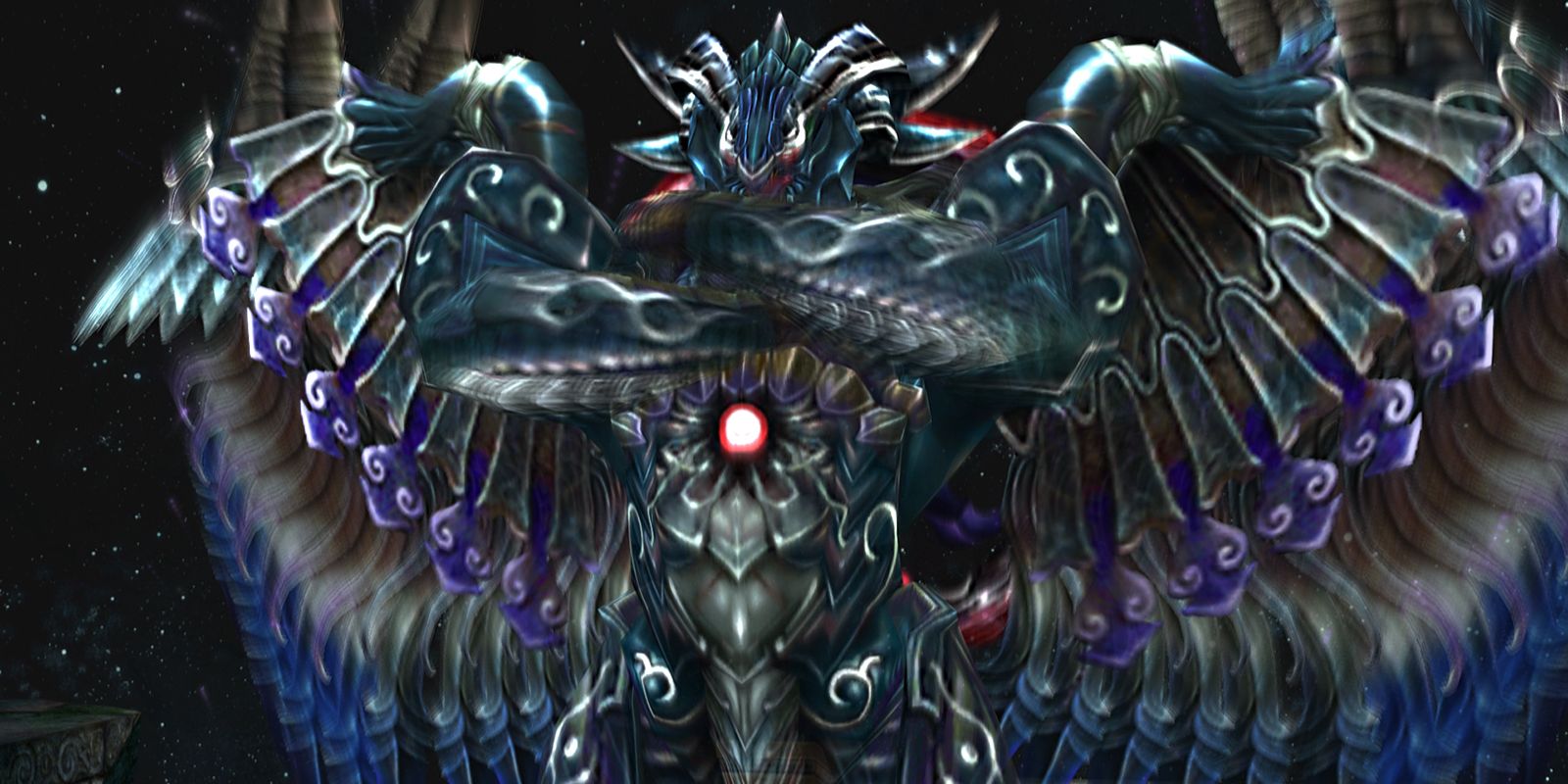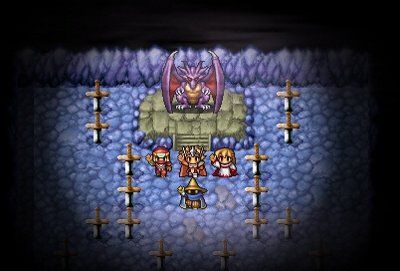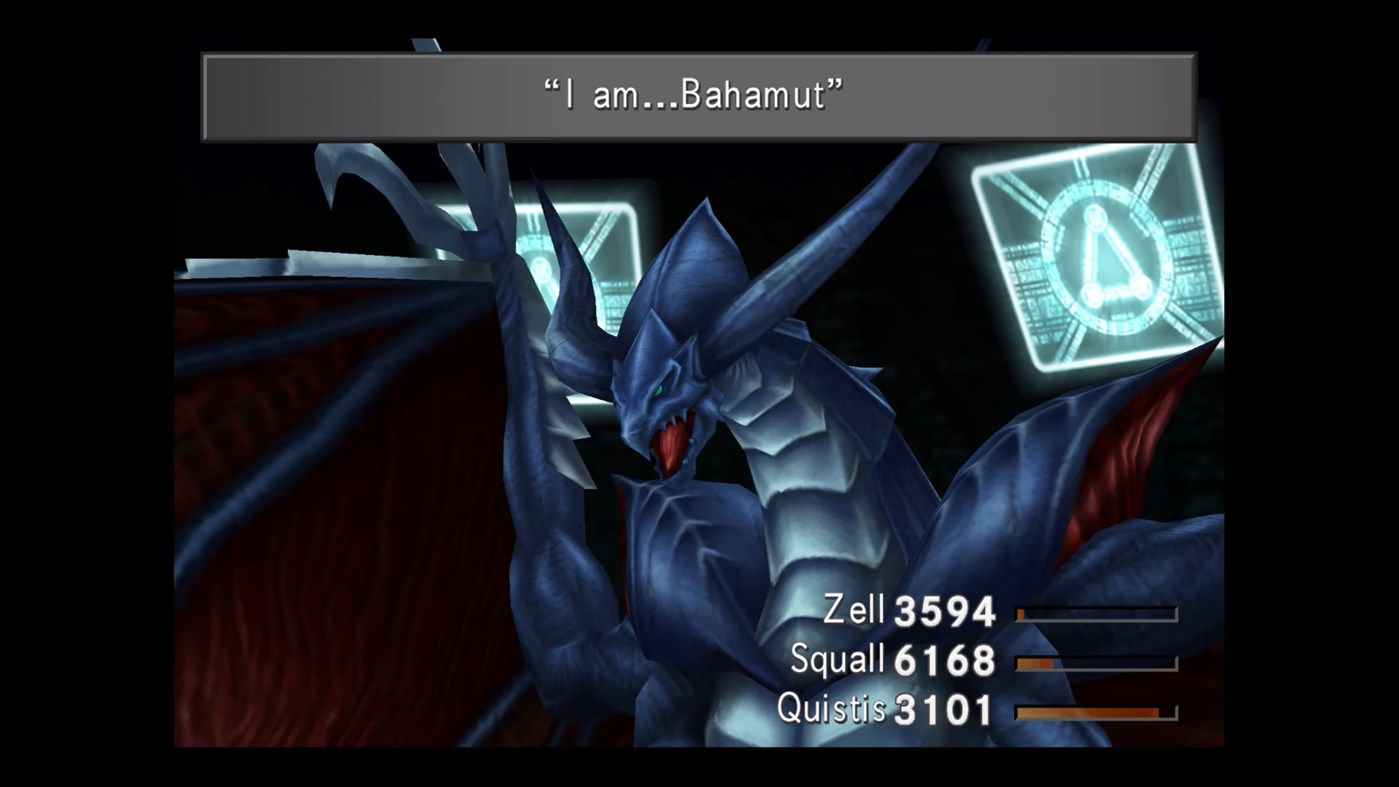Summons in Final Fantasy 7 Remake provide flashy attacks and high-damage outputs for players to enjoy. More than that, though, many of these creatures behind the FF7 summons also have their own storied histories.
One of the more famous summons in Final Fantasy 7 Remake and whole series is that of Bahamut, a giant dragon who ignites enemies with his signature Mega Flare skill. However, Bahamut did not begin as just a Summon for players to use, as his origins are from the real world.
The name "Bahamut" comes from the Arabic "Bahamūt." A variation of it, "Bahamoot," comes from Hebrew and translates to "Behemoth." Bahamut is a sea monster (which is quite ironic for a dragon that breathes fire) that lays deep below the water's surface, supporting the structure that holds the Earth. This is according to Zakariya al-Qazwini, a Persian writer, physician, astronomer and geographer who lived from 1203 to 1283.
Final Fantasy: Bahamut's Origins
Now with a little history lesson out of the way, onto Bahamut's journey to Final Fantasy 7 Remake. His history with the series starts with the original Final Fantasy back in 1987. Players of the original would find him below the Cardia Islands. He is not able to be summoned; instead, he enables the party members to upgrade to more powerful classes. This can only be done after players obtain a Rat's Tail from the Citadel of Trials.
His next appearance is in Final Fantasy 3 where players have to battle him twice. The first time results in an unwinnable battle. However, after the second bout with Bahamut, players are given the Level 8 Summon Magic spell Bahamur. This spell allows players to summon Bahamut for three uses: Aura, Rend, or Mega Flare. Aura casts Haste on the entire party, Rend causes an instantaneous knockout if it succeeds, and Mega Flare dishes out non-elemental damage on all enemies. Final Fantasy 3 would mark the first time Bahamut appears as both a Summon and as a boss.
In Final Fantasy 4, Bahamut is known as the God of Eidolons and resides in the Lair of the Father on the Red Moon. After doing battle with Rydia, Bahamut gives her the ability to summon him. There are also variants of Bahamut available as bosses. Lunar Bahamut appears in FF4 Advance and FF4: The Complete Collection at the Lunar Ruins. Meanwhile, Dark Bahamut appears as an optional boss in the Lunar Subterrane.
Jumping over to Final Fantasy 5, Bahamut makes his appearance after being unleashed upon the Merged World, which happens because a tablet from the Pyramid of Moore has been obtained by the party. He can later be fought at the peak of the North Mountain. Following the boss battle, Bahamut can be summoned to attack enemies with a non-elemental damaging skill. Meanwhile in Final Fantasy 6, Bahamut is an esper that players can get after beating Deathgaze. His signature skill, Mega Flare, deals magical and non-elemental damage to all enemies. As a bonus, he also teaches the skill Flare at a doubled rate and boosts the HP gains for those who equip him by 50%.
Final Fantasy: The More Modern Bahamut
In the original Final Fantasy 7, Bahamut comes via a Summon Materia that can be obtained after beating the Red Dragon at the Temple of the Ancients. There are also other "strains" of Bahamut in the game known as Neo Bahamut and Bahamut ZERO. Neo Bahamut is found as a Summon Materia that can be picked up in the Whirlwind Maze, and Neo is stronger than the basic Bahamut summon and can perform Giga Flare. Bahamut ZERO is a Summon Materia found in the Cosmo Canyon planetarium after obtaining the two other Bahamut strains and interacting with the Blue Huge Materia. Bahamut ZERO is the strongest of the three strains and can perform Tera Flare.
Bahamut's appearance in Final Fantasy 8 is that of a Guardian Force. He is obtained once he is slain in the Deep Sea Research Center. Again, he can perform Mega Flare which ignores the Spirit stat of enemies and damages all of them, while his Triple Triad card is an item drop from his boss battle. Over in Final Fantasy 9, he makes his appearance as one of Dagger's original eidolons.
Now in the new millennium, Bahamut makes an appearance in Final Fantasy 10 as an Aeon that rests within the Bevelle Temple. Summoners such as Yuna are able to receive him as they make their way on their pilgrimages. His signature move Mega Flare, something that's never likely to leave, returns as an Overdrive skill that automatically breaks the damage limits. There is also an optional boss fight against a dark variant of Bahamut in 10. While in Final Fantasy 10-2, Bahamut appears many times throughout the story as a boss.
Bahamut later appears in the Final Fantasy 13 trilogy, first as one of Etro's Eidolons and subsequently as an Eidolon of Oerba Yun Fang. Bahamut's "Gestalt" form has him transform into a mechanized form that Fang can ride. In Final Fantasy 13-2, the character Caius Ballad can morph into a dark version of Bahamut called Chaos Bahamut. In Lightning Returns: Final Fantasy 13, Caius does not have the ability to transform into Chaos Bahamut, though he can still call the dragon to help him.
Bahamut takes on a different form in Final Fantasy 15, as he is a humanoid cloaked in draconic armor. He plays a major part in the story of 15 and can only be summoned in one boss battle. Bahamut was originally planned to be the major villain in a second wave of downloadable content for 15. However, that second wave of FF15 DLC was ultimately scrapped.
Bahamut appears in many other Final Fantasy games like 14 and The 4 Heroes of Light. He also makes an appearance in the Bravely Default series. Overall, Bahamut himself is certainly a mainstay in the series, being with it since its inception. There are many, many other grand figures and the like throughout the Final Fantasy games.
However, few stand out to be as memorable and iconic as the fierce and fiery dragon Bahamut. It should be noted that he appears once more in Final Fantasy 7 Remake, but to avoid spoilers, that won't be discussed in his history.
Final Fantasy VII Remake is now available on the PS4.



